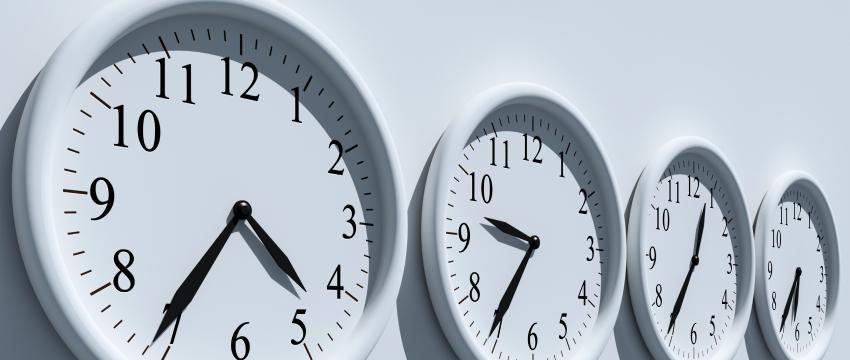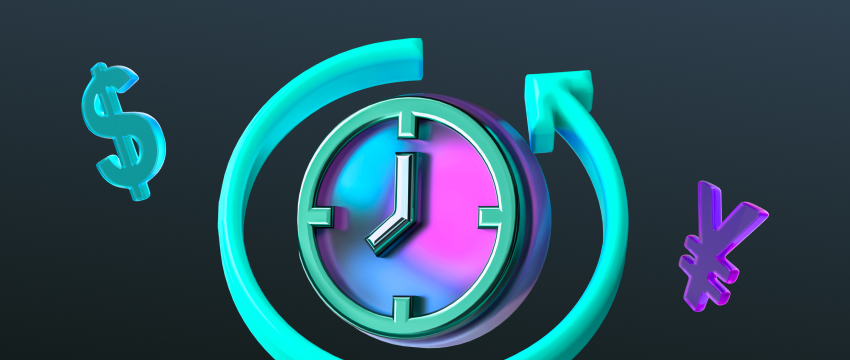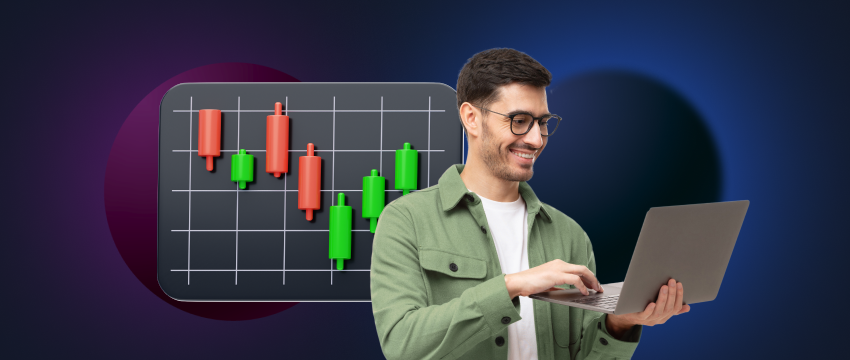Foreign exchange (forex) trading is known for its speed and emotional intensity. Traders often compare it to a “rollercoaster” of highs and lows.
Unlike acciones o el materias primas, forex is open 24 hours a day, five days a week. It is influenced by many factors, including macroeconomic indicators, political events, and investor sentiment and behavior.
This combination often leads to a volatile market environment beyond control or accurate forecasting.
The ebb and flow of the forex market
El first reason forex is like a rollercoaster is its motion. Operating across time zones as a decentralised market, forex lacks a unified “open” or “close” to set its rhythm.
Liquidity flows follow the opening and closing of financial centers—Tokyo, London, New York, and Sydney. This ensures traders can always find market activity.
Because the market operates constantly, there is always news for traders to react to, creating further movement and volatility.
Whether the ECB is cutting rates or UK retail sales are released, the constant flow of information keeps traders excited and anticipating market moves.
Once a session quiets down, another one heats up, generating more volatility. This kind of fluctuation creates excitement but can also make traders feel they must stay glued to their screens, fearing they might miss something.
Forex volatility
Volatility is what keeps forex alive and exciting, creating opportunities and keeping traders on their toes.
While it can create opportunities it can also generate uncertainty and instability. This can result in a sharp move of multiple pips, eating through your profits or suddenly swinging luck in your favour.
Unfortunately, there is nothing you can do about it, apart from managing your risk as best as you can.
What data or events create volatility?
Macroeconomic data releases such as Nonfarm payrolls (NFP), inflation prints, and PMI surveys can lead to sharp swings.
When results meet expectations or consensus, the market often prices them in, leaving little room for major moves.
On the other hand, when a reading comes out higher or below expectations, then, for example, the specific affected currency pair may jump. It strengthens if the news is positive or dips if the news is bad.
Central bank policy decisions such as cutting or raising interest rates can also have huge effects on currencies.
Major central banks may cut rates. The BoJ can intervene to boost the yen. These actions greatly affect the currency. They also impact associated traders and markets.
Brexit shook the markets. National elections caused uncertainty.
The Ukraine war affected global trading. Middle East conflicts rattled markets. These geopolitical events shaped recent market behavior.
Investors and traders influence the market. Their risk appetite matters. Market sentiment creates volatility. It can feel like a rollercoaster ride.
Volatility can be thrilling, especially when traders are on the right side of a move. When caught on the wrong side, traders can experience crushing losses.

Leveraging your trade
Leverage can increase your profits, but it can also increase your losses if trades don’t go your way.
This material effect can have an emotional aspect too, as the rush of excitement, can easily turn into the opposite, and weigh on you with the heaviness of unexpected losses.
The emotional effect
Trading forex can be emotional. It involves your hard-earned money.
It depends on your judgment. The process is full of anticipation.
Trading also brings excitement.
Su psychology here plays a big role and being human, feeling greed or fear is just part of human nature. Psychology plays a big role in trading. Greed and fear are natural.
Traders manage emotions by making clear, detailed plans. Keeping a journal helps review past trades. This allows rational analysis of every move.
What led to this reaction? How will I behave next time if I find myself in a similar situation? This is part of trading. Every trader experiences it. They may doubt themselves. They may ignore others. Overconfidence is also common.
Many traders experience losses. Some indulge in revenge trading.
They try to win back everything. This often causes further losses.
At other times, traders may leave losing positions run while cutting winners too early creating further instability in trading outcomes.
Technical charts looking like rollercoaster tracks
El price action of currency pairs always moves in a zig zag line, oscillating between levels of support and resistance, retracing Fibonacci levels, and forming patterns like head-and-shoulders. These formations create feelings of anticipation and suspense.
Macroeconomic cycles
Wider macroeconomic cycles, such as a movement from inflationary to disinflationary environments, or a shift from tightening to easing cycles, can create long-term trends marked by big corrections.
For example, emerging market currencies may perform very well over big periods but then suddenly drop when there is a capital flow reversal.

What can traders do to enjoy the ride?
While a rollercoaster ride can be exciting and exhilarating, it can also be brutal and emotionally crippling, leading to huge losses rather than profits. So how can traders avoid being thrown off the ride?
Well, as even the best forex traders have said again and again, risk management is the key. From position sizing, to using stop-loss orders, and being cautious with the use leverage are some of the measures that traders can take to make forex a smooth ride.
Another useful tip is to diversify and spread your risk across different assets. Instead of betting everything on a single currency pair, traders can spread exposure and minimise the impact of any single sudden move.
Detecting big moves and trends and adjusting trades so they are in line with strong momentum can help alleviate emotional turmoil and keep you in control. Go with the flow instead of fighting against trends.
Many traders try to catch all the opportunities they see or hear about leading them to overtrading and placing too many bad trades.
El best way to trade forex is to place good quality trades that are the result of your own research and are planned according to your goals. Never consult others or follow others blindly but always make sure you trade within your means and expectations.
Discipline
By being disciplined and keeping a trading journal, cultivating a healthy mind and attitude and following a plan will keep you in check, even when the market is volatile.
Riding the forex rollercoaster
There is no doubt that forex trading can easily become a rollercoaster because it moves fast, is volatile and the stakes are high.
However, while prices can go crazy and move unexpectedly, this doesn’t mean that a trader should react the same way. The markets are obviously dynamic and beyond human control, but our own emotional world and mental state is in our own hands.
If forex trading is a serious activity for you, then cultivating discipline and emotional control can help you navigate the chaos and explore opportunities consistently and rationally.
Descargo de responsabilidad: Este material tiene fines informativos y educativos generales únicamente y no debe considerarse como asesoramiento ni recomendación de inversión. T4Trade no se hace responsable de los datos proporcionados por terceros a los que se hace referencia o que aparecen en hipervínculos en esta comunicación.




